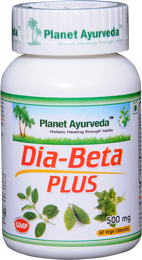One of the two primary types of diabetes, this type occurs when insulin is generated by the pancreas’ beta cells, but the body’s cells are resistant to insulin. While it doesn’t carry the same ketoacidosis-related mortality risk,Otherwise, it carries many of the same complications and risks as type 1 diabetes (which is characterized by an insulin deficiency).
Individuals who are overweight or obese are more likely to develop insulin resistance, as excess fat impairs the body’s ability to utilize insulin effectively. Type 2 diabetes usually occurs steadily. Most people with the disease are overweight at the time of identification. However, type 2 diabetes can also build up in those who are thin, especially the aged. Family unit and genetics play an important function in type 2 diabetes. Lower movement level, poor diet, and excessive body weight (especially around the waist) considerably add to the risk for type 2 diabetes. The risk factors include Age greater than 45 years, high cholesterol level , high blood pressure, history of gestational diabetes, Polycystic ovarian syndrome, race/ethnicity (African Americans, Hispanic Americans, and Native Americans all have high rates of diabetes).
The primary goal of treatment for Type 2 diabetes is to regulate the blood glucose level in order to prevent or minimize complications. People with type 2 diabetes may experience marked hyperglycemia, but most do not require insulin injections. In fact, 80% of all people with type 2 diabetes can be treated with diet, exercise, and, if necessary , oral hypoglycemic agents (drugs taken by mouth to lower the blood sugar).
Effective Herbal Remedy to Control Sugar Level
This herbal blend, known as Dia-Beta Plus, works gradually. It will not cause an immediate drop in blood sugar or induce hypoglycemia. The effects are slow but consistent, and they can be monitored over time. As the treatment progresses, you may find it necessary to reduce the dosage of other diabetes medications, supplements, or herbs you are using.
Dia-beta plus is a blend of various herbs for diabetes, which are described in Ayurveda. The herbs not only help to control sugar levels but also help to rejuvenate overall health, Restore stamina and help combat fatigue. Dia-beta plus contains herbs like Karela (Momordica charantia), Tulsi (Ocimum sanctum), Gurmaar (Gymnema sylvestre), Saptrangi (Salacia chinensis) which are long know to have beneficial effects in diabetes.The herbs are not only good to control sugar levels but also excellent for preventing diabetic neuropathy.
This product has its roots in the Ayurveda-ancient herbal healthcare system of India . According to Ayurveda the balance of 3 energies- Vata, Pitta and Kapha (Kinetic, Thermal and Potential energy) in the body is a disease free state whereas their imbalance causes diseases. In Ayurveda, imbalance in “Vata” and “Kapha” is considered as the root cause of diabetes. Herbs in this formula control both “Vata” and “Kapha” and are thus good in controlling sugar levels.
Herbs in Dia-beta Plus
Dia-beta Plus is purely a herbal formulation without any chemicals added into it. The ingredients have been frequently used in the Ayurvedic system of medicine since 5,000 B.C. without any side effects. While there are numerous herbal products for diabetes, this one stands out by effectively controlling blood sugar levels without causing side effects or sharp fluctuations.
Ingredients of Dia-beta Plus
| S. No. | Herb Used | Latin Name | Quantity |
| 1. | Gurmaar | Gymnema sylvestre | 150 mg |
| 2 | Karela | Momordica charantia | 150 mg |
| 3. | Saptrangi | Salacia oblonga | 50 mg |
| 4. | Vijaysar | Pterocarpus marsupium | 50 mg |
| 5. | Ashwagandha | Withania somnifera | 50 mg |
| 6. | Tulsi | Ocimum tenuiflorum | 50 mg |
Ingredients of Dia-Beta Plus
1. Gurmaar (Gymnema Sylvestrae)
In Hindi language, Gurmaar means “The sugar killer”.It is an herb known for centuries in Ayurveda for its ability to regulate blood sugar levels. Recent studies show that it contains Gymnemic acid molecules responsible for its anti-diabetic action. They bind with glucose molecules in the intestines and inhibit their entry into the bloodstream. Thus it is effective in controlling sugar levels. This is a perfect herb for sugar control.
2. Karela (Momordica Charantia)
It is commonly known as bitter gourd. It is very popular for it’s anti-diabetic properties. It’s also rich in micronutrients which are required for prevention of complications of diabetes. We have a juice form of momordica herb as well. Read more about our product Karela Saar The products like Diabeta plus, Karela Saar, Ashwagandha, Shilajit can all be used together to combat diabetes with herbal remedies.
3. Vijaysar (Pterocarpus Marsupium)
Vijaysar is a large tree, and its bark has long been recognized for its effectiveness in managing diabetes. The bark is crafted into a wooden glass, which is often referred to as “The Miracle Cure for Diabetes.” To use it, water is placed in the wooden glass overnight and consumed by diabetic patients in the morning. The water changes to a brown color, and the glass is replaced after about a month when the water no longer changes color. Diabeta Plus contains the bark of this miraculous tree, enhancing its benefits for diabetes management.
4. Saptrangi (Salacia Oblonga)
Salacia oblonga is an exceptional herb used in the management of diabetes. It is a tree whose bark is known for its powerful blood sugar-lowering effects. While it has gained significant attention in modern Western herbal practices, particularly due to its potent anti-diabetic properties, Salacia oblonga has been a cornerstone of Ayurvedic medicine for centuries. In Ayurveda, it is traditionally used to support healthy blood sugar levels and improve insulin sensitivity. Recent studies highlight that its active compounds, such as Salacinol and Kotalanol, help inhibit the enzymes responsible for breaking down carbohydrates, preventing blood sugar spikes after meals. This makes it an excellent natural remedy for managing Type 2 diabetes.
Dosage
For Non Insulin Dependent – 2 capsules twice daily, 1/2 hour before meals, with water.
For Insulin Dependent – 4 – 6 capsules twice daily, 1/2 hour before meals, with water.
To buy Dia-beta Plus, please visit store.planetayurveda.com/products/dia-beta-plus
Other Supplements Good To Be Used With Diabeta Plus
Ashwagandha (Withania somnifera)
Ashwagandha is adaptogenic, relieves anxiety and stress. It is also an effective anti-inflammatory. Ashwagandha is a useful herb especially for diabetic neuropathy, weakness, fatigue and weight loss due to diabetes. It improves overall well being.
Tulsi (Ocimum sanctum)
It is popularly known as ‘The Holy Basil’ is a sacred plant according to Hindu mythology. People in India worship this plant as it has tremendous medicinal properties. Regular use of leaves of this plant controls blood sugar levels very effectively. It is also useful in many types of cancers, viral and bacterial infections, sore throat, cough and cold etc.
Diabeta Plus capsule contains effective Herbs for Diabetes control. It Controls Sugar Levels Naturally. The herbs for Sugar control are without any additives or preservatives.It can be very useful as an very effective herbal treatment for Diabetes.
A very useful and effective natural treatment for Diabetic Neuropathy. Although there are a lot of Herbal Products for Diabetes, but the unique combination of various herbs in Diabeta Plus has made it a very different and a very useful herbal product for diabetes.
Diabetic Neuropathy
Ashwagandha and Shilajit capsules are effective herbal supplements that can be used alongside Dia-Beta Plus to help manage diabetic neuropathy. This herbal combination has been shown to deliver quick results in addressing neuropathy symptoms. For optimal results, Ashwagandha is typically taken in 500 mg capsules, twice daily, to help combat diabetic neuropathy and other complications associated with diabetes. Both herbs work synergistically to reduce inflammation, improve circulation, and support nerve health, offering relief from the discomfort and pain often experienced by individuals with diabetic neuropathy.

